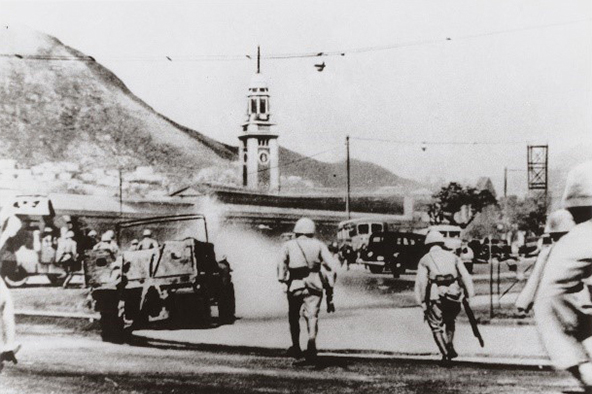The Former Kowloon-Canton Railway Clock Tower, often referred to simply as the Clock Tower, holds significant historical and cultural value for Hong Kong. It stands as a symbol of the city's colonial past. Erected in 1915 as part of the Kowloon-Canton Railway terminus, the tower is a lasting reminder of British architectural influence and the period of British rule in Hong Kong.
History
Completed by 1915, the Clock Tower is an Edwardian style masonry, building out of red bricks and granite, functioned as a central hub for the KCR, a major railway line that facilitated trade and transportation between mainland China and Victoria Harbour in Hong Kong. This new railway connection was instrumental in fostering economic growth and development in Hong Kong by enabling the efficient movement of goods and people between mainland China and the city. The KCR effectively transformed Hong Kong into a major transportation and trading hub, contributing significantly to its prosperity.

Back in 1908, then-governor Frederick Lugard has already emphasized the economic significance of constructing a railway that connects Hong Kong and mainland China. He outlined the necessity of constructing the KCR by referring to it as “preserving the predominance of Hong Kong”. Lugard recognized that the economic prosperity in Hong Kong is largely due to the fact that it had always served as an intermediary between the river ports of the Pearl River Delta and other global ports. KCR then became Hong Kong’s first great train to China, which was opened in 1910. Nonetheless, due to the lack of space for expansion, the terminus of KCR was relocated to Hung Hom in 1975. The entire Kowloon Station at Tsim Sha Tsui was demolished. Hong Kong Cultural Centre was then built on the original site of the terminal. Next time, when you visit the Clock Tower, compare it with the following images and you will appreciate how it has stood across time!

Symbolic Sign
After the relocation of the Kowloon-Canton Railway terminus to Hung Hom in 1975, the original terminus building in Tsim Sha Tsui was dismantled in 1978. However, the Clock Tower was preserved and remains as an iconic landmark and an enduring testament to the early days of railway history in Hong Kong. Furthermore, the Clock Tower is a poignant emblem of the journeys and stories of millions of Chinese immigrants. For many, this terminus was their point of entry to not just Hong Kong, but a stepping stone to other parts of the world. The tower thus symbolizes hope, new beginnings, and the multicultural fabric of Hong Kong society.
In commemoration of the Clock Tower Bell's centenary, its chimes can be heard every hour from 8am to midnight. If you would like to have a complete view of the Clock Tower, feel free to climb up the observation deck by the promenade. Right in front of the Clock tower, there are two long rectangular water fountains. Visit the Clock Tower at night time, and you will be able to capture its beautiful reflection with night lights on the water surface.










